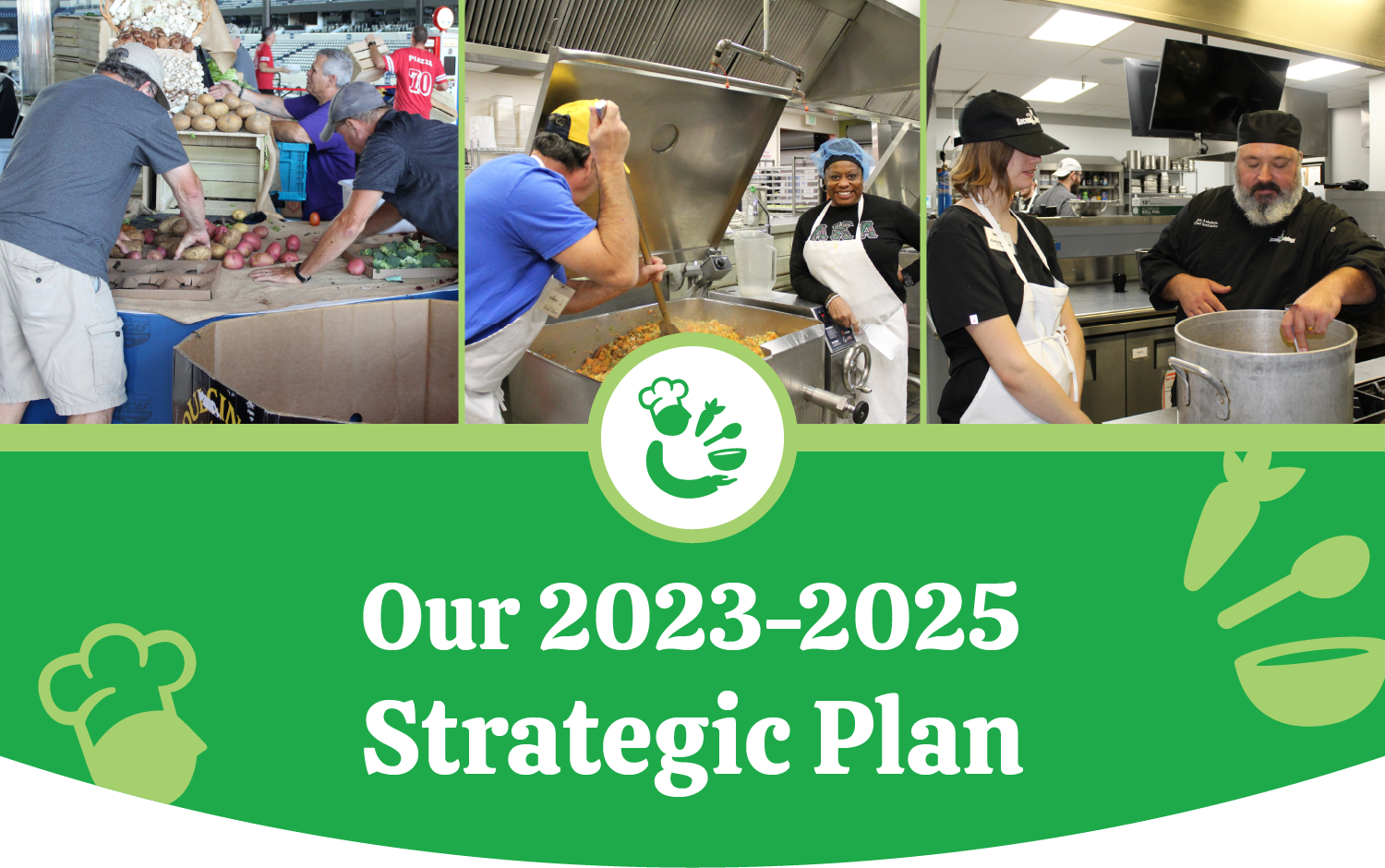
Over the last 25 years, Second Helpings has rescued over 49 million pounds of food and distributed nearly 19 million meals in central Indiana. And we’ve surpassed 1,000 graduates of our Culinary Job Training program. We truly couldn’t do this work without our community of support.
Our work over the past 25 years is only possible thanks to you and the community that rallies around us. And while we’ll keep fighting to reduce the need, we are ready to keep working for the next 25 years and beyond.
As a result of our strategic planning process, this is some of what you can expect to see:
Over the next few years, we’ll get increasingly deliberate about gathering and responding to feedback from partners, donors, volunteers, staff, and those who eat our food. We’ll make sure our processes are as efficient and effective as possible and that our facility is sufficient for us to meet the growing needs of our community. We’ll see an increased focus on community engagement and outreach, so that we can ensure that we can continue to meet the community’s needs well into the future. And we’ll lean into the environmental sustainability side of our work, making sure that we’re doing everything we can to lessen our environmental impact while also calculating and sharing the ecological benefits of all we do.
Our team has moved into implementing the goals and strategies outlined below, and there will inevitably be changes on the horizon. Everything we do has always been, and always will be, with an eye toward serving as many people as possible in the best way possible. And importantly, we are striving to meet the community’s needs as defined by the community itself.
Second Helpings’ Vision & Mission Statements
Our Vision
We envision a community where everyone has enough nourishing food and ample opportunities to thrive.
Our Mission
We address hunger today and build self-sufficiency to prevent hunger tomorrow.
Diversity, Equity, Accessibility, Inclusion, and Belonging Statement
At Second Helpings, we believe that everyone deserves access to healthy and nutritious food, and an equitable opportunity to access the resources and support they need to thrive, regardless of their background or identity. We recognize that historically marginalized communities have been disproportionately affected by systemic barriers and inequalities, including food insecurity and poverty. We are committed to creating a more just and equitable community. Our differences make us stronger and we are committed to fostering a culture of inclusion and belonging where everyone feels valued, supported, and respected. We can only achieve this goal through ongoing intentionality, education, and collaboration.
2023-2025 Goals

Program Delivery
Continue to enhance and innovate Second Helping programs to meet customer and community needs.

Operational Effectiveness
Enhance the operations of Second Helpings to meet our future needs.

Awareness
Increase awareness of our programs and community impact.

Environmental Sustainability
Demonstrate and contribute to efforts that have a positive environmental impact.
Click the boxes below to read the strategies around each of our goals.
Strategic Plan Metrics

Increase in Partnership Quality Score

Increase in Workforce Training Certifications

Increase in Staff Satisfaction Rate

Increase in Rate (%) of Volunteer Shifts Filled

Increase in Donor Retention Rate

Increase Greenhouse Gas Emissions Prevented
If you have questions about our strategic plan or ideas to share, reach out to our team at info@secondhelpings.org.
